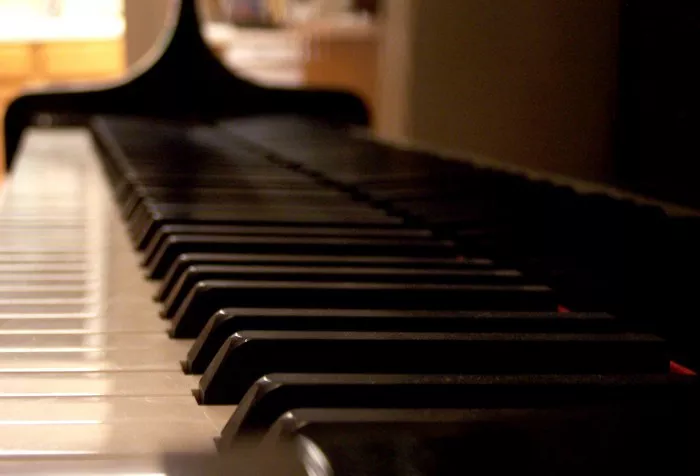The piano, a timeless instrument known for its rich and resonant sound, requires periodic maintenance to ensure it continues to deliver optimal performance. One crucial aspect of piano maintenance is string replacement, a process that involves changing worn-out or damaged strings to preserve the instrument’s tonal quality. In this comprehensive guide, we will delve into the factors that influence the cost of replacing piano strings, shedding light on the intricacies of this essential aspect of piano care.
Understanding Piano Strings: The Heart of Tonal Quality
Piano strings play a pivotal role in producing the instrument’s distinctive sound. Over time, these strings can wear out due to factors such as age, humidity, and frequency of use. When piano strings become worn or damaged, they can affect the overall tonal quality and playability of the instrument. Replacing piano strings is a crucial step in maintaining the piano’s integrity and ensuring it continues to deliver a beautiful and resonant sound.
Factors Influencing Cost: A Multifaceted Consideration
Several factors contribute to the overall cost of replacing piano strings. Understanding these factors is essential for piano owners and enthusiasts seeking transparency in the maintenance process. The key factors influencing the cost include:
1. Piano Type and Size: The size and type of piano significantly impact the cost of string replacement. Grand pianos, with their larger frames and longer strings, generally incur higher costs than upright pianos. Additionally, concert grand pianos may have higher costs compared to baby grands due to the increased complexity of their stringing.
2. String Material: Piano strings are typically made of steel or a combination of steel and other metals. The quality and composition of the string material can affect the cost. High-quality materials, such as German or Japanese steel, may be pricier than standard steel options.
3. String Quality and Brand: The quality and brand reputation of the replacement strings chosen for the piano can influence the overall cost. Premium brands known for their durability and tonal quality may come with a higher price tag.
4. Number of Strings: The total number of strings in a piano varies based on its size and type. Grand pianos, for example, have more strings than upright pianos. The higher the number of strings, the more extensive the replacement process, contributing to increased costs.
5. Labor Costs: Professional piano technicians charge for their services, and the labor costs associated with replacing piano strings contribute to the overall expense. The complexity of the job, including factors such as stringing techniques and regulating the piano’s pitch, can impact labor costs.
6. Geographical Location: The cost of piano services, including string replacement, can vary based on geographical location. Prices may be influenced by the local economy, demand for piano technicians, and regional pricing trends.
Average Cost Range: Setting Expectations
While the cost of replacing piano strings can vary based on the factors mentioned, it’s helpful to have a general understanding of the average cost range. On the lower end of the spectrum, piano string replacement for a standard upright piano may start at around $500 to $1,000. For grand pianos, the cost can range from $1,000 to $3,000 or more, depending on the size and complexity of the instrument.
It’s important to note that these figures are approximate, and actual costs can deviate based on individual circumstances and preferences. High-end pianos, rare or antique instruments, or those requiring custom string materials may incur higher expenses.
Choosing a Professional Technician: Ensuring Quality Workmanship
When contemplating piano string replacement, selecting a qualified and experienced piano technician is paramount. A reputable technician possesses the expertise to assess the condition of the piano, recommend suitable replacement strings, and execute the replacement process with precision.
Consider seeking recommendations or researching piano technicians in your area with a proven track record of excellence. Requesting estimates and comparing quotes from multiple technicians can provide insights into the prevailing costs in your locality. Additionally, inquire about the warranty on the replacement strings and the technician’s guarantee on the quality of workmanship.
Preventive Maintenance: Prolonging String Life
While piano string replacement is inevitable over the instrument’s lifespan, adopting preventive maintenance practices can help prolong the life of piano strings and reduce the frequency of replacements. Here are some preventive measures to consider:
1. Humidity Control: Maintain a consistent level of humidity in the piano’s environment to prevent fluctuations that can impact the strings. Humidity control systems or regular tuning adjustments can be effective measures.
2. Regular Tuning: Schedule regular tuning sessions with a professional piano tuner. Regular tuning helps maintain proper tension in the strings and ensures the piano remains in optimal playing condition.
3. Careful Playing: Encourage careful playing habits, particularly when it comes to striking the keys. Excessive force or improper playing techniques can contribute to accelerated wear on the strings.
4. Professional Inspections: Periodically have your piano inspected by a qualified technician. Regular inspections can identify issues early on, allowing for timely interventions and potentially reducing the need for extensive string replacement.
See Also: The Abundance of Piano Chords: Everything You Need To Know
Conclusion: Investing in Musical Longevity
In conclusion, the cost of replacing piano strings is influenced by various factors, including piano type, string material, labor costs, and geographical location. Understanding these factors empowers piano owners to make informed decisions about maintaining their instruments.
Investing in the replacement of piano strings is not just a financial commitment but a contribution to the longevity and continued musical excellence of the instrument. By selecting reputable technicians, adopting preventive maintenance practices, and being mindful of the unique characteristics of your piano, you can ensure that the strings resonate with the same brilliance and beauty that captivated generations before.


